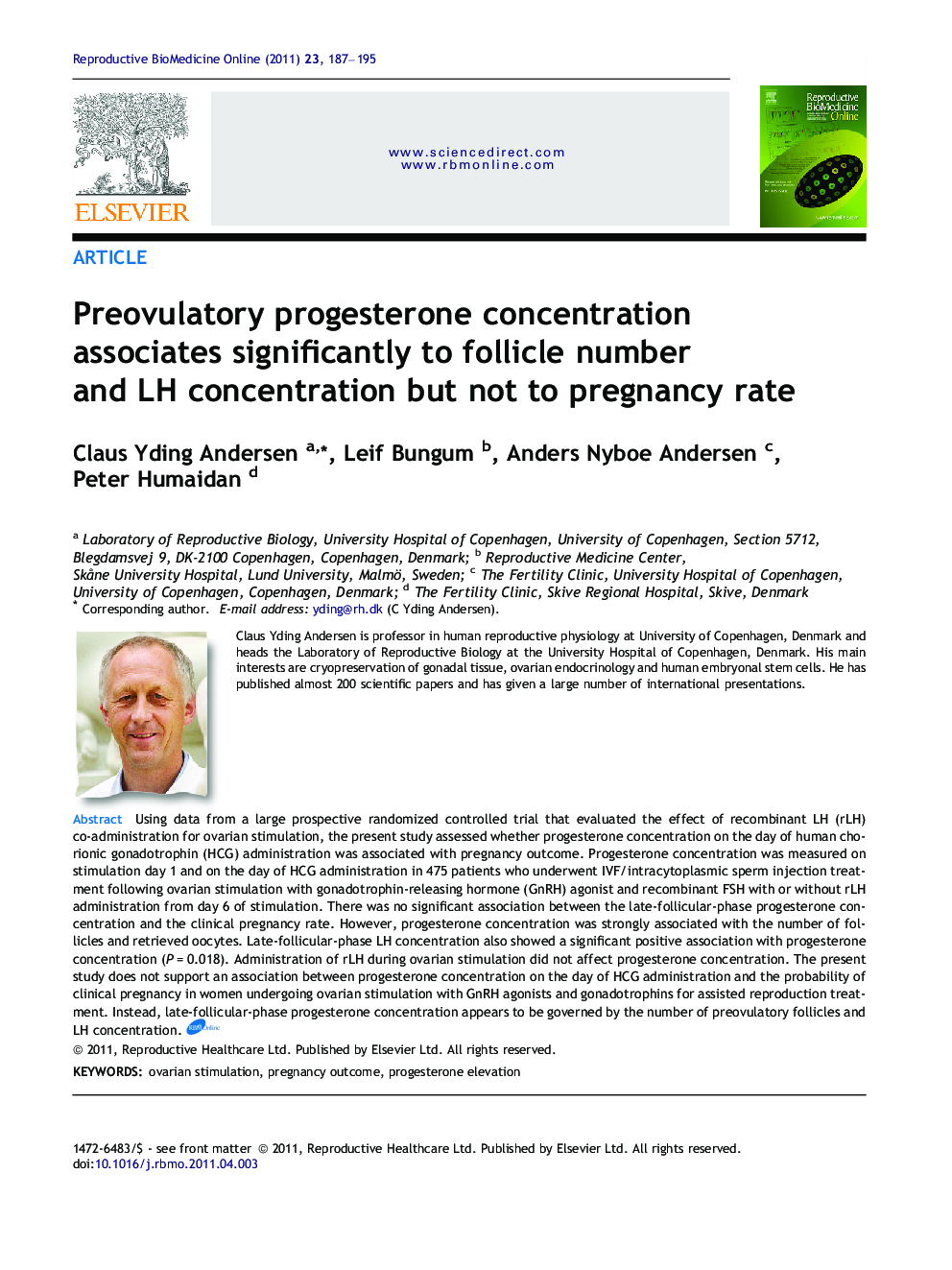| Article ID | Journal | Published Year | Pages | File Type |
|---|---|---|---|---|
| 6189206 | Reproductive BioMedicine Online | 2011 | 9 Pages |
Using data from a large prospective randomized controlled trial that evaluated the effect of recombinant LH (rLH) co-administration for ovarian stimulation, the present study assessed whether progesterone concentration on the day of human chorionic gonadotrophin (HCG) administration was associated with pregnancy outcome. Progesterone concentration was measured on stimulation day 1 and on the day of HCG administration in 475 patients who underwent IVF/intracytoplasmic sperm injection treatment following ovarian stimulation with gonadotrophin-releasing hormone (GnRH) agonist and recombinant FSH with or without rLH administration from day 6 of stimulation. There was no significant association between the late-follicular-phase progesterone concentration and the clinical pregnancy rate. However, progesterone concentration was strongly associated with the number of follicles and retrieved oocytes. Late-follicular-phase LH concentration also showed a significant positive association with progesterone concentration (PÂ =Â 0.018). Administration of rLH during ovarian stimulation did not affect progesterone concentration. The present study does not support an association between progesterone concentration on the day of HCG administration and the probability of clinical pregnancy in women undergoing ovarian stimulation with GnRH agonists and gonadotrophins for assisted reproduction treatment. Instead, late-follicular-phase progesterone concentration appears to be governed by the number of preovulatory follicles and LH concentration.The present study evaluates whether the sex steroid progesterone produced by the granulosa cells of the developing follicle reflects the likelihood of whether a woman undergoing stimulation with exogenous hormone preparations will achieve pregnancy. The study was unable to demonstrate any association between the progesterone concentration close to ovulation and the chance of conceiving. However, the study found a close association between the number of follicles that developed and the concentration of progesterone at the end of the stimulation period, suggesting that each individual follicle contributed to the circulating progesterone concentration around the time of ovulation. A significant association was found between the pituitary-derived hormone LH and the progesterone concentration, suggesting that LH stimulated progesterone secretion by the follicle.
